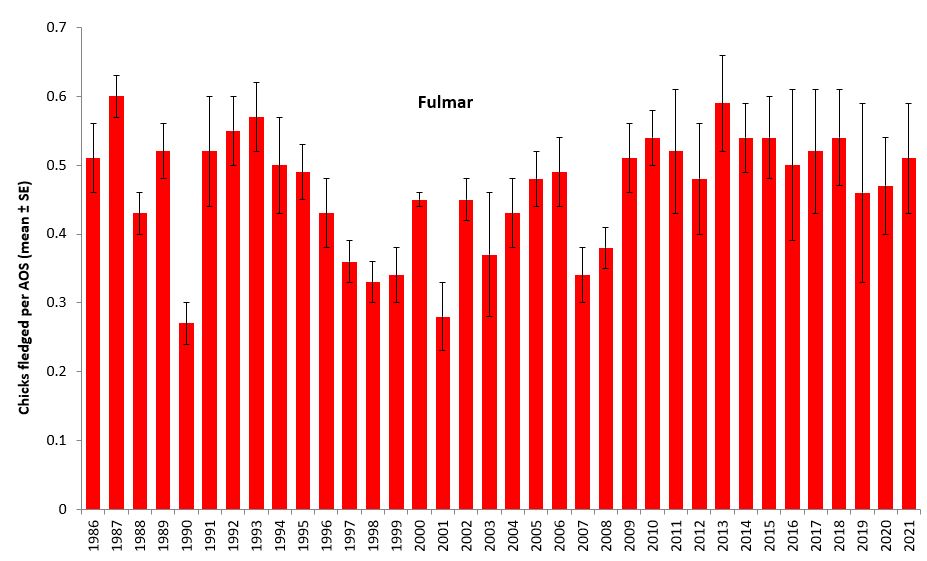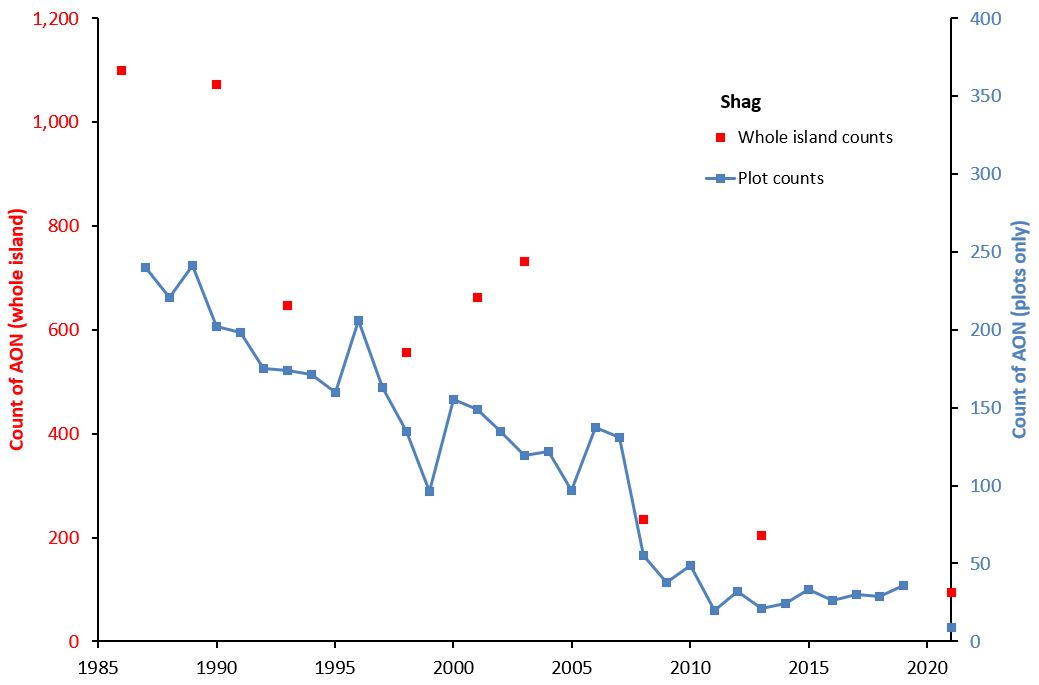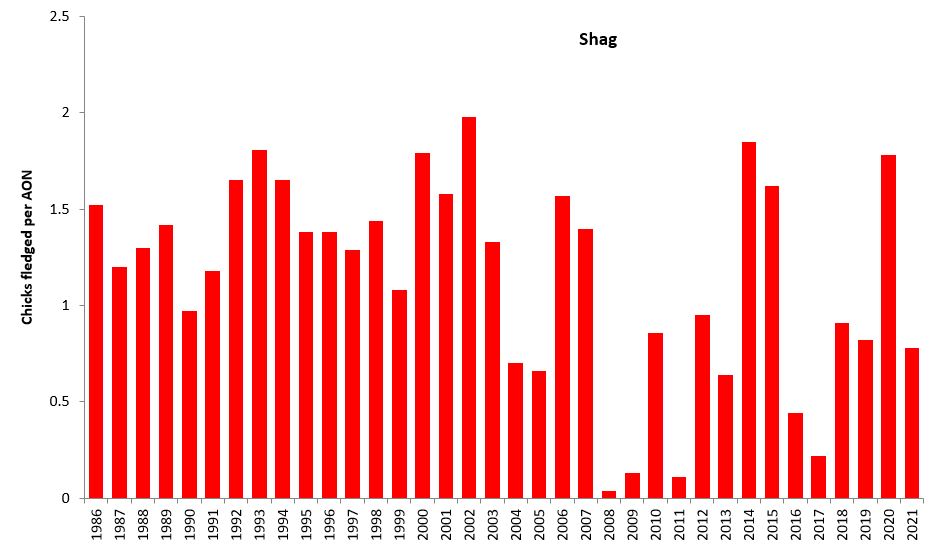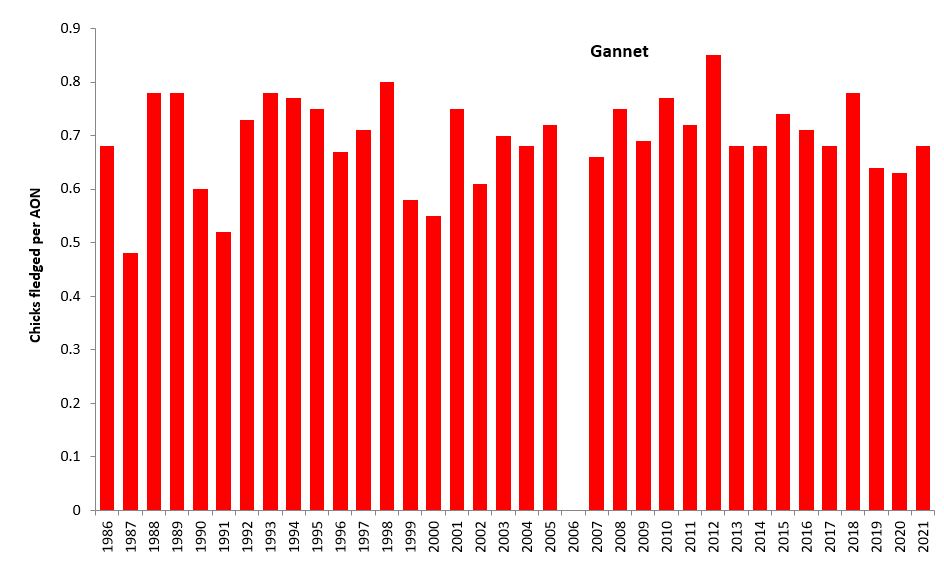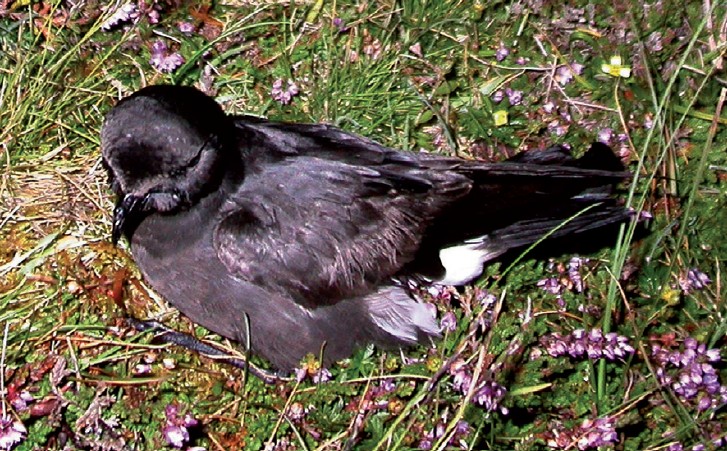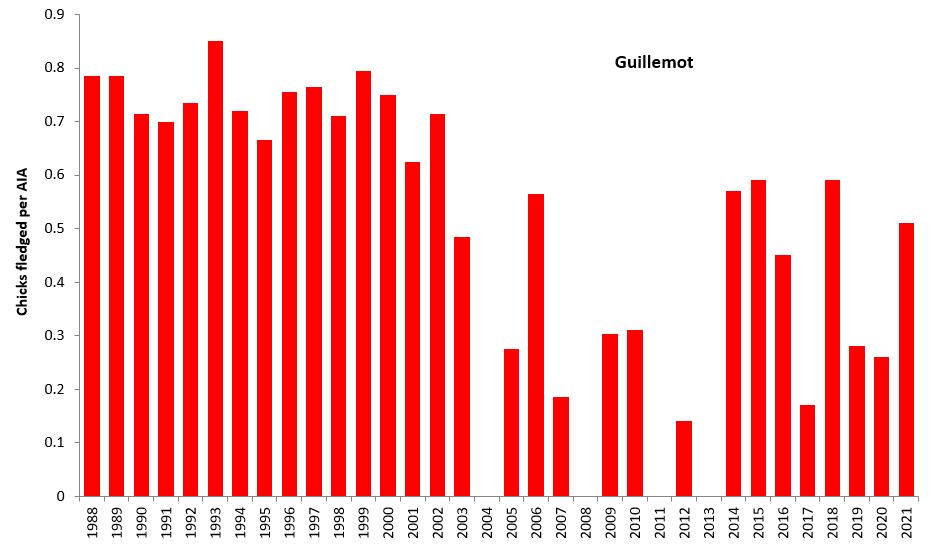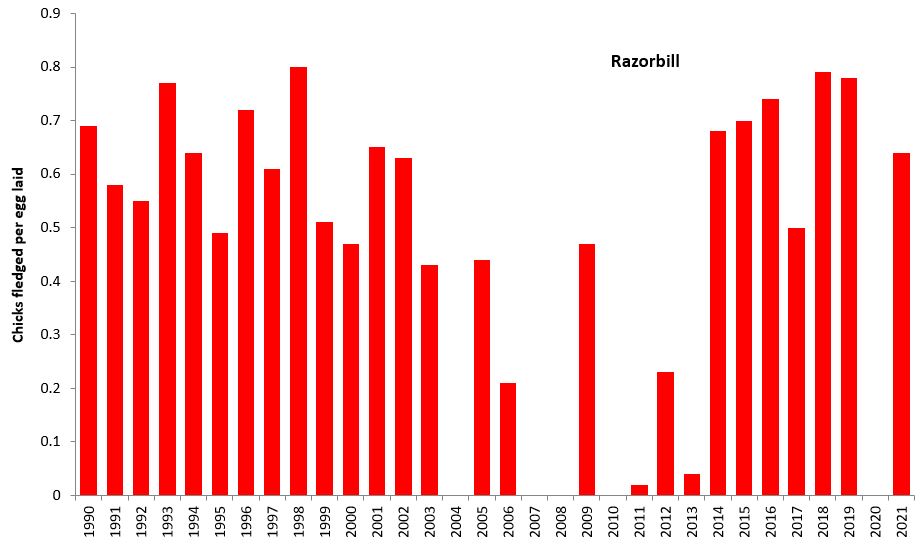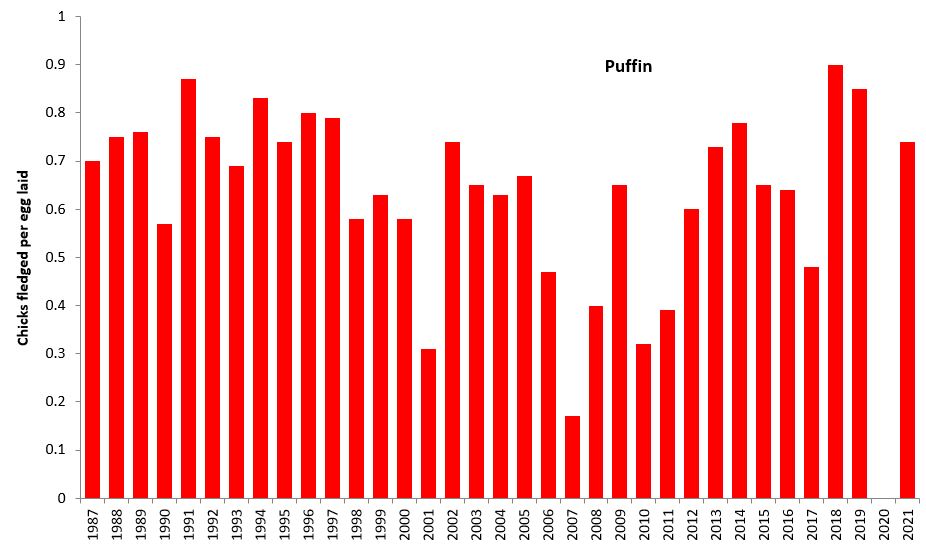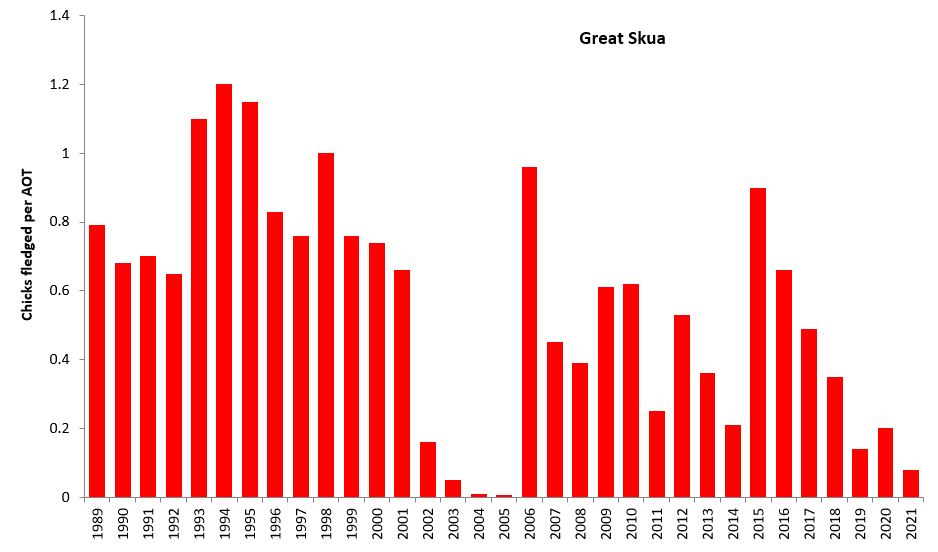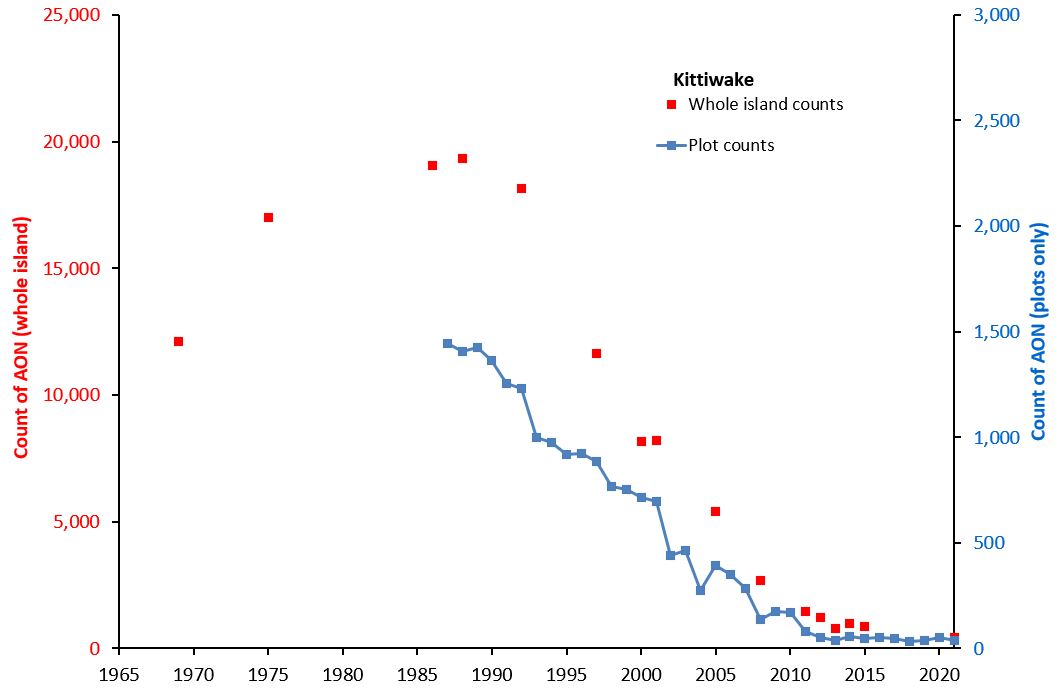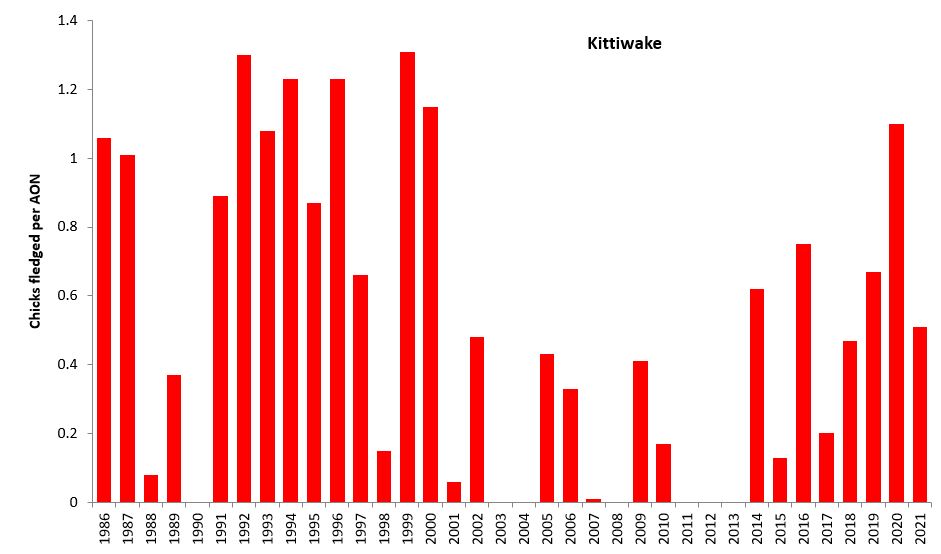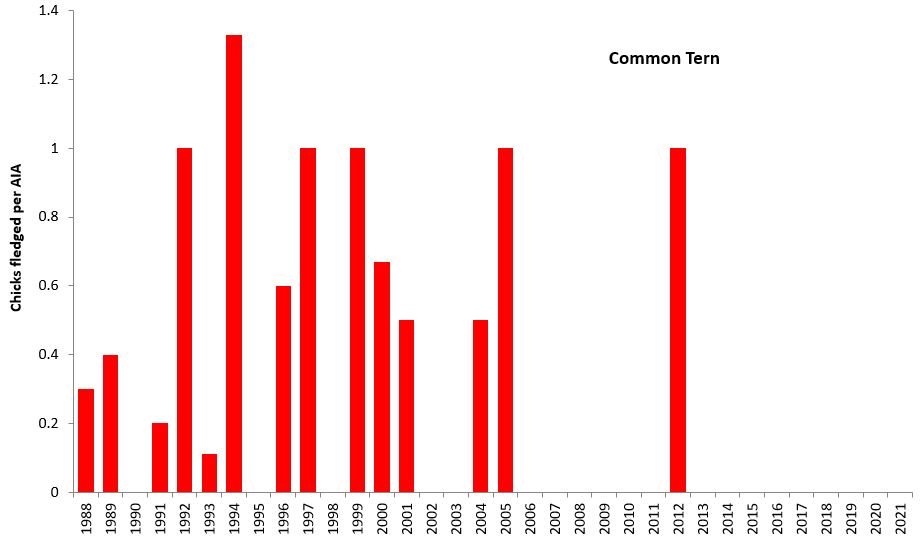Seabirds
Shetland names are included in brackets.
Fulmar (Maalie) Fulmarus glacialis
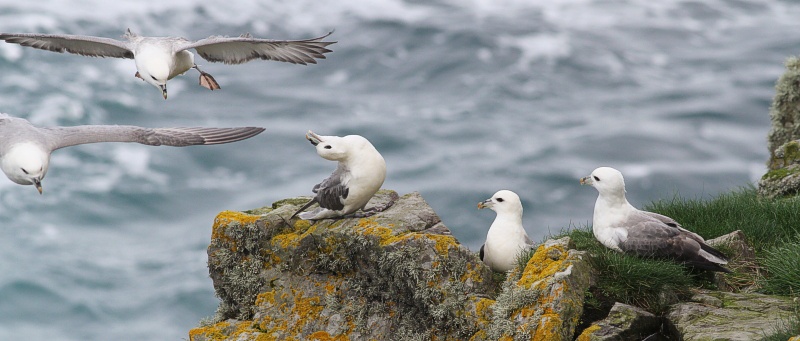
It seems difficult to believe that there were no Fulmars breeding on Fair Isle before 1903, when the species spread from its British outpost of St Kilda (or possibly from the Faroe Islands or Iceland) and colonised the south of Shetland. As a scavenger of the seas with a varied diet, the Fulmar was able to take advantage of whaling and fishing fleets to increase its distribution, which now includes the North Atlantic and North Pacific. In recent years, the success story of the Fulmar has taken a step backward with numbers decreasing throughout Britain and Ireland. On Fair Isle, the population peaked at over 43,000 pairs in 1996, but was down to 32,061 pairs in 2016. The Fulmar’s habit of scavenging scraps, plankton and fish from near the surface has led to an increasing amount of plastic being ingested by the birds. Studies in the North Sea showed that Fulmars have an average of around 30 pieces of plastic per bird in their stomachs (that’s the equivalent of about 60 grams of plastic in a human stomach). Despite being able to live to well over 40 years, many are starving to death at a much younger age, with the plastic being carried in their stomachs possibly contributing to this.

